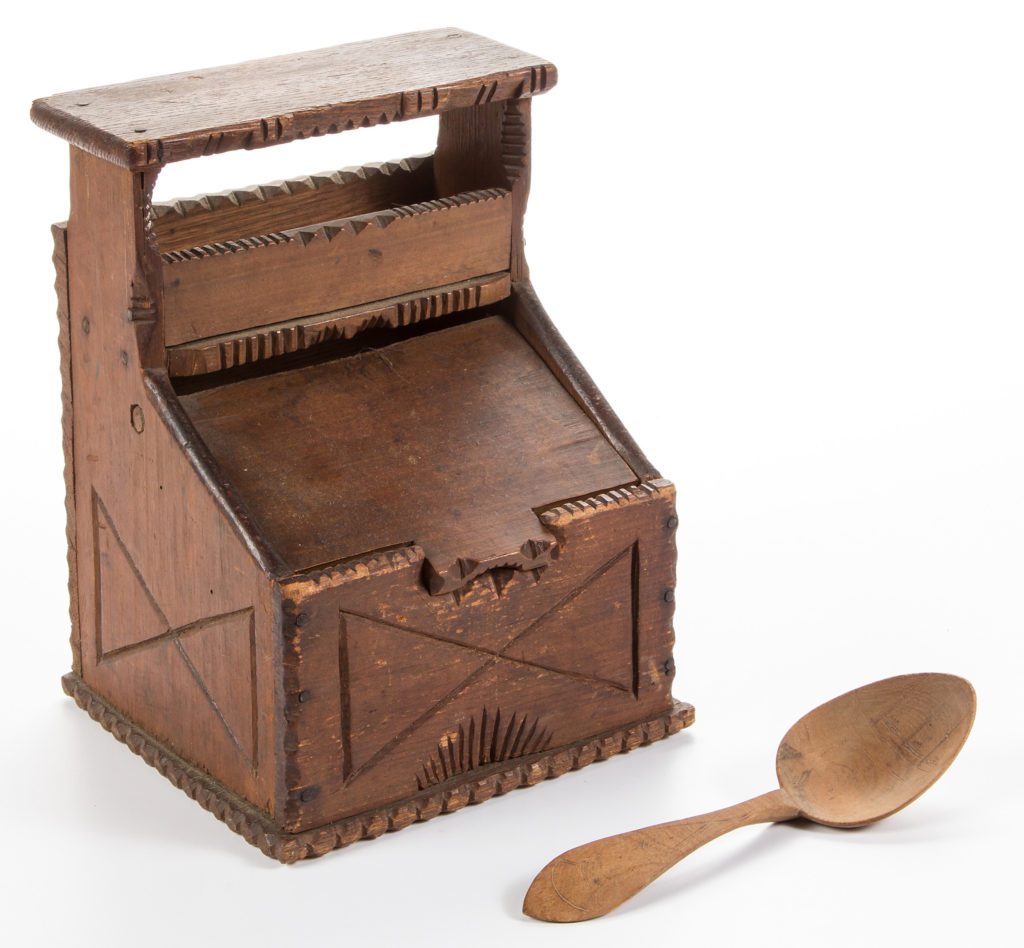Southern foods and salt are like hand and glove. There are many salty foods specific to the mountainous South: country ham, sour beans and sauerkraut, to name a few. Salt played a large part in early Appalachian food preservation, since meats had to be salt-cured to last the winter, and certain vegetables were pickled to preserve them.
Luckily for the Appalachian highland folk who depended on salt, salt licks were common in the mountains. The licks were a byproduct of an ancient, untouched sea called the Iapetus Ocean (predating the Atlantic) beneath the Appalachian Mountains. For millennia, animals had gathered around salt licks that were formed where the brine came bubbling to the surface.
Legend has it that Mary Draper Ingles, an early settler in southwest Virginia in the 1750s, was captured from her settlement by the Shawnee. She and some other captives were taken to the Kanawha River Valley in what is now West Virginia, where the salt licks were, and forced to harvest the salt. She finally escaped and, in retelling her story, told the European settlers about the salt licks.
Hence the beginning of the Appalachian salt industry. One of the longest lasting Appalachian salt makers in West Virginia, near where Ingles lived, belongs to the Dickinson family. In the early 1800s, William Dickinson of Bedford County, Virginia, had heard that people were boiling brine from springs for the resulting salt. He invested in “salt properties” along the Kanawha River and founded the J.Q. Dickinson Salt-Works in 1817.
Nestled in the Kanawha River Valley, just southeast of Charleston in the small town of Malden, the company flourished. Malden became “the salt making capital of the East.” Dickinson’s company made salt longer than the other salt producers in the region, actually continuing to produce industrial salt into the 20th century.
Today, two seventh-generation Dickinson descendants — Nancy Payne Bruns and her brother, Lewis Payne — have reinvented that storied tradition. Realizing they could harvest salt for culinary purposes, they began recapturing salt from the pristine 400-million-year-old sea below the Appalachian Mountains. The brine is evaporated in special sun-houses and harvested by hand, create a culinary, farm-to-table salt sold to restaurants throughout the country.
Back in the early days, though, the salt that was available to many settlers was lump salt. Only after pounding the lumps with mortar and pestle was free-flowing salt available for culinary use. Since salt absorbs moisture from the air, especially in the damp, cool, mountain weather, cooks kept it dry by storing it in wooden salt boxes hung near the fire or stove.
By the 1800s, the practical colonial housewife suspended a patterned and decorated covered salt box on the wall to contain enough crystals for preserving meat or as a granular extinguisher for dousing a kitchen fire. The salt box was a symbol of hospitality in Britain, Germany and Ireland. In colonial American, it suggested a well-run and comfortable home. Like salt itself, the box might not be noticeable, and yet it was essential for cooking.
Antique salt boxes may look simple, but were typically very well crafted. The collector should take note of the quality of the wood and joints, the hinging of the lid, the hanger and the overall finish. Wooden salt boxes could be covered with decorative carving or were painted, veneered or left plain. Their value is determined by the paint and the quality of the design, as well as the construction.
Samuel L. Plank (1821-1900) was an Amish folk artist in Mifflin County, Pennsylvania, known for his paint-decorated boxes and fraktur. He first became known beyond his community for the colorfully decorated salt boxes he made, signed and dated. Maybe a dozen or so have passed through dealers’ hands into folk-art collections. Although one was featured on “Antiques Roadshow” and appraised for $20,000, most American painted, wooden hanging salt boxes found at antique shows are priced at far less, generally under $1,000. Recently several have sold at auction for between $125 and $500.
All through history, the availability of salt has been a pivotal part of civilization. Salt has been revered as a seasoning that adds depth and complexity to a variety of culinary creations and will likely figure in many a delicious Thanksgiving meal.
Michelle Galler is an antiques dealer, design consultant and realtor based in Georgetown. Her shop is in Rare Finds, in Washington, Virginia. Reach her at
antiques.and.whimsies@gmail.com.


